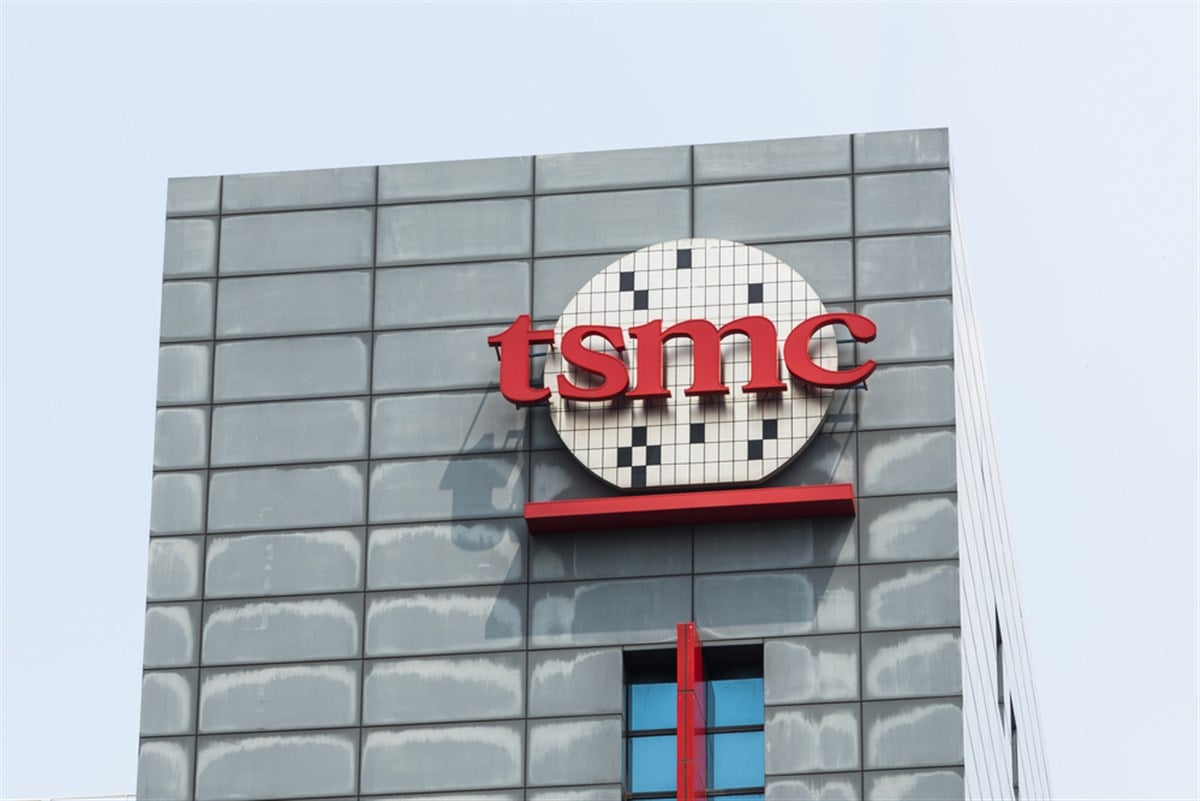Late 2020 marked the onset of a severe global chip shortage, which had far-reaching repercussions throughout the interconnected world economy. The chip shortage stemmed from multiple factors, including pandemic-related disruptions, surging demand for electronics, and pre-existing supply chain vulnerabilities. These factors exposed the critical importance of semiconductors in virtually every industry sector globally.
From automotive, manufacturing, and consumer electronics to healthcare and telecommunications, industries worldwide grappled with production delays, rising costs, and an uncertain future. Furthermore, escalating geopolitical tensions, particularly between the US and China, introduce a new layer of complexity to the strained global chip market. These tensions have manifested in trade restrictions, technological competition, and growing concerns about supply chain security, further highlighting the strategic importance of semiconductors in the 21st century.
TSMC: A Foundry Leader
TSMTaiwan Semiconductor Manufacturing$175.14 +9.43 (+5.69%) (As of 01:56 PM ET)52-Week Range$84.01▼$176.06Dividend Yield0.98%P/E Ratio33.36Price Target$162.00
At the heart of the global semiconductor industry lies Taiwan Semiconductor Manufacturing Company NYSE: TSM (TSMC), the world’s largest and most advanced semiconductor foundry. A semiconductor foundry manufactures chips designed by other companies, acting as a specialized factory for the semiconductor industry. Foundries are crucial because they allow companies to design and sell chips without investing in expensive fabrication facilities, fostering innovation and competition in the semiconductor market.
TSMC’s dominance stems from its unparalleled expertise in manufacturing chips designed by other companies, enabling a vast ecosystem of fabless semiconductor companies to thrive. TSMC’s earnings report for Q1 showed a consolidated revenue of approximately $18.87 billion (converted from the reported New Taiwan Dollar), marking a 16.5% increase year-over-year, though a 5.3% decline from the previous quarter. The company attributed this decline to typical smartphone seasonality, partially offset by persistent demand for high-performance computing (HPC) applications. High-performance computing (HPC) involves using powerful computer systems to solve complex problems that require massive processing power and data analysis. The demand for HPC is rapidly increasing due to its growing applications in artificial intelligence, scientific research, drug discovery, financial modeling, and other data-intensive fields.TSMC’s advanced process technologies, particularly its 3nm and 5nm nodes, are in high demand, reflecting the industry’s relentless pursuit of smaller, faster, and more efficient chips. These leading-edge nodes, accounting for 65% of TSMC’s total wafer revenue in Q1 2024, are crucial for powering next-generation smartphones, data centers, and AI applications. Looking forward, TSMC expects strong demand for these advanced nodes to continue, partially offset by continued smartphone seasonality, leading to a projected revenue of between $19.6 billion and $20.4 billion for Q2 2024. The company remains committed to expanding its production capacity to meet the ever-growing global semiconductor demand.
Intel: Regaining Market Share and Expanding Domestic Manufacturing
Intel Corporation NASDAQ: INTC was once synonymous with semiconductor manufacturing, but the company has faced significant challenges in recent years. Intel has lost ground to competitors like TSMC and Samsung in process technology and market share. However, under the leadership of CEO Pat Gelsinger, Intel is embarking on an ambitious turnaround strategy to reclaim its position as a leader in chip manufacturing.
$30.74 -0.18 (-0.58%) (As of 01:55 PM ET)52-Week Range$29.73▼$51.28Dividend Yield1.63%P/E Ratio32.02Price Target$39.58
Intel’s “IDM 2.0” initiative is central to this strategy, which involves substantial investments in internal manufacturing capacity and external foundry partnerships. Intel is also investing heavily in new fabrication facilities (fabs) in the United States, a move driven by both economic and national security considerations. This expansion aims to bolster domestic chip production, address supply chain vulnerabilities, and strengthen the US’s position in the global semiconductor industry.
Intel’s earnings report for Q1 2024 reported revenue of $12.7 billion, a 9% increase year-over-year, exceeding Intel’s analyst community’s expectations. However, the company reported a GAAP net loss of $437 million, or $0.09 per share, partly attributed to ongoing investments in its turnaround strategy and the cyclical nature of the semiconductor industry. Despite these challenges, Intel remains optimistic about its long-term prospects. The company expects to return to year-over-year revenue and non-GAAP EPS growth in fiscal year 2024, driven by its anticipated progress in process technology, increased manufacturing capacity, and growing demand for its products in key markets like data centers and AI.
NVIDIA: Capitalizing on The AI Revolution
NVIDIA Corporation NASDAQ: NVDA dominates the graphics processing unit (GPU) market. NVIDIA has strategically positioned itself at the forefront of the AI revolution. NVIDIA’s GPUs were originally designed for high-performance graphics in gaming but have since become essential components in data centers, cryptocurrency mining facilities, and AI applications worldwide. The company’s “Hopper” architecture for GPUs has set new standards for performance and efficiency in AI training and inference, powering the development of advanced AI models and driving innovation across numerous industries.
$125.39 +4.48 (+3.71%) (As of 02:04 PM ET)52-Week Range$39.23▼$126.88Dividend Yield0.02%P/E Ratio73.33Price Target$116.90
NVIDIA’s earnings for Q1 2025 showed the company achieving record revenue of $26.0 billion, a remarkable 18% increase from the previous quarter and an astounding 262% surge year-over-year. This surge was fueled primarily by strong demand for data center products, which generated a record $22.6 billion in revenue, representing a 23% increase from the previous quarter and a 427% leap year-over-year. The company’s data center growth is attributed to the accelerating adoption of generative AI, a technology requiring immense computing power, making NVIDIA’s GPUs a coveted resource for companies at the forefront of this technological wave.
Looking towards the future, NVIDIA is already laying the groundwork for further expansion. The company’s next-generation “Blackwell” platform promises even greater performance and efficiency for AI workloads, aiming to solidify NVIDIA’s leadership in this rapidly evolving field. Moreover, NVIDIA is targeting new markets with its “Spectrum-X” networking platform, designed to handle the massive data flows required for large-scale AI deployments in data centers reliant solely on Ethernet connectivity. These strategic initiatives, coupled with NVIDIA’s financial performance, underscore NVIDIA’s commitment to pushing the boundaries of AI and shaping the future of computing.
The Evolving Semiconductor Landscape
ASML Holding NASDAQ: ASML is a Dutch multinational corporation with a near-monopoly in the extreme ultraviolet (EUV) lithography machines market. These machines are essential for producing the most advanced chips, with TSMC, Samsung, and Intel relying heavily on ASML’s technology to manufacture their cutting-edge semiconductors. These companies’ success and innovations will continue to shape the semiconductor landscape, influencing everything from smartphone performance and data center capabilities to the advancement of artificial intelligence.
Semiconductor Industry Challenges and Opportunities
The semiconductor industry has plenty of opportunities but faces significant challenges that demand careful navigation. Geopolitical tensions, particularly between the US and China, cast a long shadow over the industry. These tensions have resulted in trade restrictions, tariffs, and increased scrutiny of foreign investments in the semiconductor sector, potentially disrupting supply chains and hindering technological collaboration.
Moreover, the pursuit of advanced process technologies, while crucial for innovation, is becoming increasingly complex and capital-intensive. The transition to smaller nodes like 2nm and beyond requires substantial investments in research and development, sophisticated manufacturing facilities, and a highly skilled workforce.
Attracting and retaining top talent in a competitive market is another significant challenge for the industry. As demand for skilled engineers, technicians, and researchers continues to grow, semiconductor companies must compete for a limited talent pool, potentially driving up labor costs and impacting innovation. Despite these challenges, the semiconductor industry is presented with substantial opportunities for growth and innovation.
The relentless advancement of artificial intelligence, for example, drives demand for high-performance chips, creating a lucrative market for companies like NVIDIA specializing in GPUs and accelerated computing. Another significant trend is the rise of edge computing, driven by the need for faster data processing closer to the source. This paradigm shift creates demand for specialized, low-power chips optimized for data analysis and sensor processing at the network’s edge.
Finally, as environmental, social, and governance (ESG) considerations become increasingly important for investors and consumers, the semiconductor industry faces pressure to improve its sustainability practices. Reducing chip manufacturing’s environmental footprint, addressing resource consumption, and promoting ethical sourcing practices are all becoming critical for maintaining a competitive edge and ensuring long-term viability in a world increasingly…




